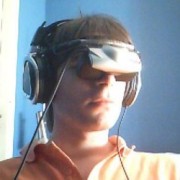I was browsing the wiki and I found the article about running SGI machines in
headless desktop
mode. The first thought I had was: "Wow, that's a really convenient way to avoid locating a compatible monitor!"
The second thought I had was: "Hold on, if data about what should be on the SGI machine's screen, as well as keystrokes and mouse movements, are being sent through a serial port... how much performance is lost?"
Really, isn't the serial port a huge (or should I say tight) bottleneck? If the SGI machine is constantly sending desktop data to the controlling machine, and the controlling machine interrupts the receiving stream for each keypress and mouse movement, what's the lag on such a setup? If I had to make a wild guess, I'd say the average performance is 5 frames per second, with a delay of .2 to .4 seconds between performing an action and seeing it performed on the screen. Is that close enough, or am I being too pessimistic? Or maybe... am I being too optimistic ?
The second thought I had was: "Hold on, if data about what should be on the SGI machine's screen, as well as keystrokes and mouse movements, are being sent through a serial port... how much performance is lost?"
Really, isn't the serial port a huge (or should I say tight) bottleneck? If the SGI machine is constantly sending desktop data to the controlling machine, and the controlling machine interrupts the receiving stream for each keypress and mouse movement, what's the lag on such a setup? If I had to make a wild guess, I'd say the average performance is 5 frames per second, with a delay of .2 to .4 seconds between performing an action and seeing it performed on the screen. Is that close enough, or am I being too pessimistic? Or maybe... am I being too optimistic ?













